Dear Readers,
As SSC MTS | CHSL notification is out and candidates have started their preparation for this exam. Mahendras also has started special quizzes for this examination. This series of quizzes are based on the latest pattern of the SSC MTS | CHSL examination. Regular practice of the questions included in the quizzes will boost up your preparations and it will be very helpful in scoring good marks in the examination.
Q.1. Choose the box that is similar to the box formed from the given sheet of paper.
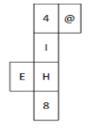
(A) 

(B) 

(C) 

(D) 

उस बॉक्स को चुनें जो दिए गए शीट से बने बॉक्स के समान है।
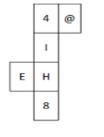
(A) 

(B) 

(C) 

(D) 
Q.2. Four words have been given out of which three are alike in some manner, while one is different. Choose the odd one.

Q.2. Four words have been given out of which three are alike in some manner, while one is different. Choose the odd one.
(A) Fenugreek
(B) Coccinia
(C) Amaranth
(D) Spinach
चार शब्द दिए गए हैं, जिनमें से तीन किसी तरह से समान हैं, जबकि एक अलग है। विषम को चुनें।
(A) मेथी
(B) कुंदरु
(C) अमरेंथ
(D) पालक
Q.3. Find the missing number from the below options.
3 10
5 8
7 ?
5 8
(A) 7
(B) 5
(C) 6
(D) 8
नीचे दिए गए विकल्पों में से लुप्त संख्या ज्ञात कीजिए।
3 10
5 8
7 ?
5 8
(A) 7
(B) 5
(C) 6
(D) 8
Q.4. The statements below are followed by four conclusions labeled I, II, III and IV. Assuming that the information in the given statements is true, even if it appears to be at variance with generally established facts. Decide which conclusion(s) logically and definitely follow(s) from the information given in the statements.
Statements:
No laptop is notebook.
All notebooks are tablets.
Conclusions:
I. No laptop is tablets.
II. No tablets is laptop.
III. Some tablets are notebooks.
IV. All the tablets are notebooks.
(A) Only conclusion (III) follows.
(B) Only conclusion (I) and (IV) follow.
(C) Only conclusion (III) and (IV) follow.
(D) Only conclusion (I) and (III) follow.
नीचे दिए गए कथन चार निष्कर्षों I, II, III और IV का अनुसरण करते हैं। यह मानते हुए कि दिए गए कथनों में जानकारी सत्य है, भले ही यह आम तौर पर स्थापित तथ्यों के साथ विचरण करता प्रतीत हो। निर्णय लें कि कौन से निष्कर्ष तार्किक रूप से और निश्चित रूप से कथनो में दी गई जानकारी से अनुसरण करते हैं।
कथन:
कोई लैपटॉप नोटबुक नहीं है।
सभी नोटबुक टैबलेट हैं।
निष्कर्ष:
I. कोई लैपटॉप टैबलेट नहीं है।
II. कोई टैबलेट लैपटॉप नहीं है।
III. कुछ टैबलेट नोटबुक हैं।
IV. सभी टैबलेट नोटबुक हैं।
(A) केवल निष्कर्ष (III) अनुसरण करता है।
(B) केवल निष्कर्ष (I) और (IV) अनुसरण करते हैं।
(C) केवल निष्कर्ष (III) और (IV) अनुसरण करते हैं।
(D) केवल निष्कर्ष (I) और (III) अनुसरण करते है।
Q.5. Select the option that is related to the third term in the same way as the second term is related to the first term.
56 : 8 : : 91 : ?
(A) 17
(B) 13
(C) 15
(D) 19
उस विकल्प का चयन करें जो तीसरे पद से संबंधित है उसी प्रकार दूसरा पद पहले पद से संबंधित है।
56 : 8 : : 91 : ?
(A) 17
(B) 13
(C) 15
(D) 19
Q.6. The statements given below are followed by two conclusions labeled I and II. Without resolving anything yourself choose the conclusion which logically follows from the given statement.
Statements:
Most of the advocates are hard working.
Manoj is an advocate.
Conclusion I: Manoj is a politician.
Conclusion II: Some advocates do not work hard.
(A) Neither conclusion I nor conclusion II follows.
(B) Only conclusion II follows.
(C) Both conclusions I and II follow.
(D) Only conclusion I follow.
नीचे दिए गए कथन दो निष्कर्षों I और II का अनुसरण करते हैं। कुछ भी हल किए बिना अपने निष्कर्ष का चयन करें जो दिए गए कथन से तार्किक रूप से अनुसरण करता है।
कथन:
अधिकांश अधिवक्ता परिश्रमी हैं।
मनोज एक अधिवक्ता हैं।
निष्कर्ष I: मनोज एक राजनीतिज्ञ हैं।
निष्कर्ष II: कुछ अधिवक्ता परिश्रमी नहीं हैं।
(A) न तो निष्कर्ष I और न ही निष्कर्ष II अनुसरण करता है।
(B) केवल निष्कर्ष II अनुसरण करता है।
(C) दोनों निष्कर्ष I और II अनुसरण करते हैं।
(D) केवल निष्कर्ष I अनुसरण करता है।
Q.7. Six friends - A, B, C, D, E and F are sitting in a circle facing center. F is to the immediate left of A and B is sitting opposite to F. E and D are sitting opposite to each other. Who is sitting third right to A?
(A) F
(B) E
(C) C
(D) A
छ: मित्र - A, B, C, D, E और F एक वृत्त मे केंद्र की ओर मुख करके बैठे हैं। F, A के तुरंत बायें तरफ है और B, F के विपरीत बैठा है। E और D एक दूसरे के विपरीत बैठे हैं। A के दायें तीसरे कौन बैठा है?
(A) F
(B) E
(C) C
(D) A
Q.8. Which Venn diagram best represents the given set of classes?
Animals, Mammals, Goat
(A)

(B) 

(C) 

(D) 

कौन सा वेन आरेख वर्गों के दिए गए सेट का सबसे अच्छा प्रतिनिधित्व करता है?
पशु, स्तनधारी, बकरी
(A)

(B) 

(C) 

(D) 

Q.9. Select the option that is related to the third term in the same way as the second term is related to the first term.
Jurist : Law :: Orator : ?
(A) Lawyer
(B) Writing
(C) Acting
(D) Speech
उस विकल्प का चयन करें जो तीसरे पद से संबंधित है उसी प्रकार दूसरा पद पहले पद से संबंधित है।
विधिवेत्ता : कानून :: वक्ता : ?
(A) वकील
(B) लेखन
(C) अभिनय
(D) भाषण
Q.10. Select the correct option that will fill in the blank and complete the series.
L, K, I, F, B, W,........
(A) S
(B) Q
(C) P
(D) R
सही विकल्प चुनें जो रिक्त स्थान को भरेगा और श्रृंखला को पूरा करेगा।
L, K, I, F, B, W,........
(A) S
(B) Q
(C) P
(D) R
ANSWER-
Q.1. 3
4 ----- H
I ------- 8
E ------ @
Q.2. 2
Whole plant is used as food in all other except option (B).
विकल्प (B) को छोड़कर, अन्य सभी में पूरे पौधे को भोजन के रूप में उपयोग किया जाता है।
Q.3. 3
3 + 7 = 5 + 5
8 + 8 = 10 + 6
Q.4. 1
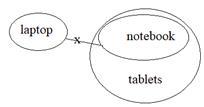
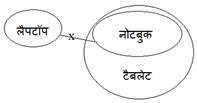
Q.5. 2
8 x 7 = 56
13 x 7 = 91
Q.6. 1
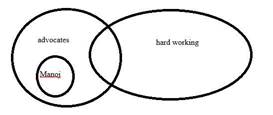
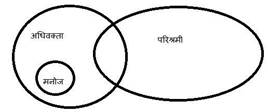
Q.7. 3
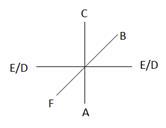
Q.8. 4
Q.9. 4
Jurist is related to Law. Similarly, Orator is related to Speech.
विधिवेत्ता कानून से संबंधित है। इसी तरह वक्ता भाषण से संबंधित है।
Q.10. 2
-1, -2, -3, -4, -5, -6





0 comments:
Post a Comment
MAHENDRA GURU